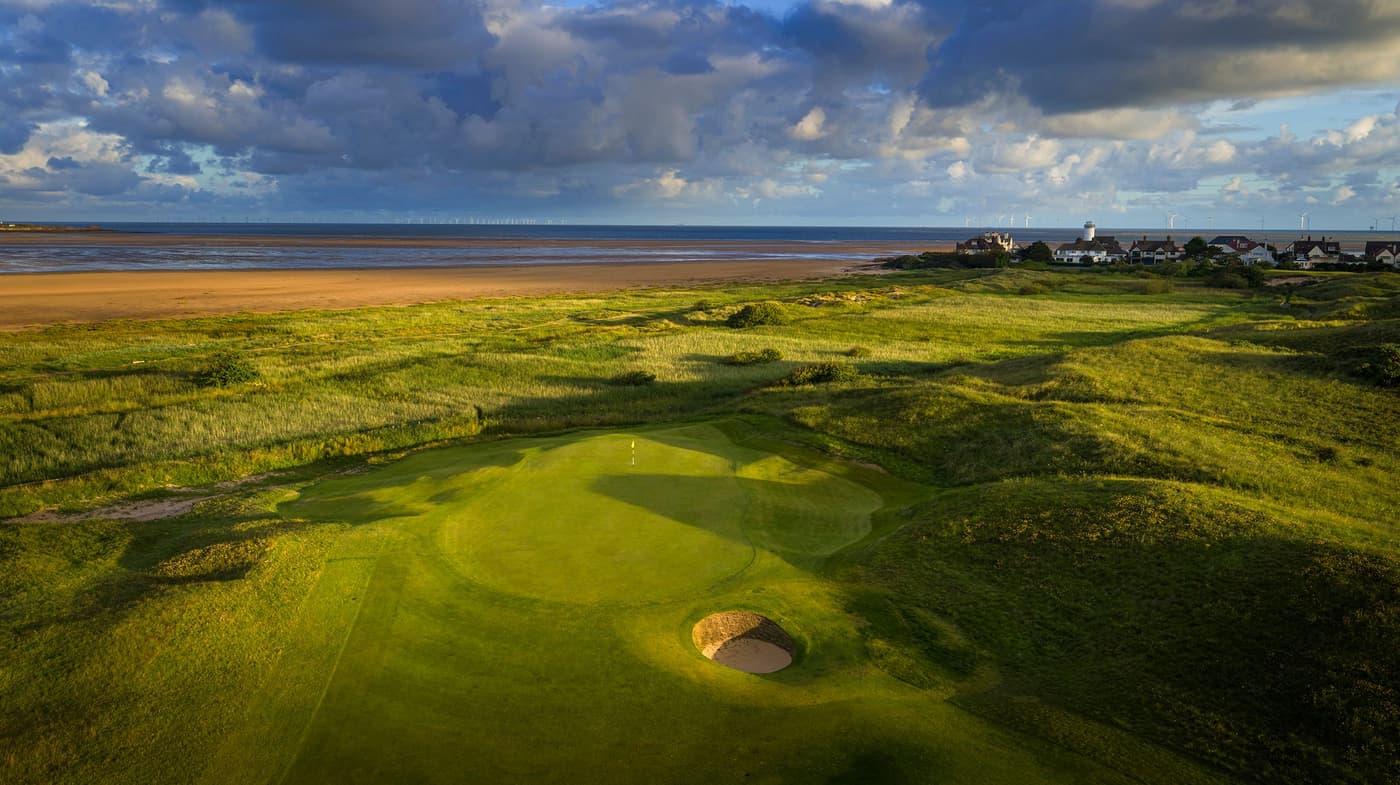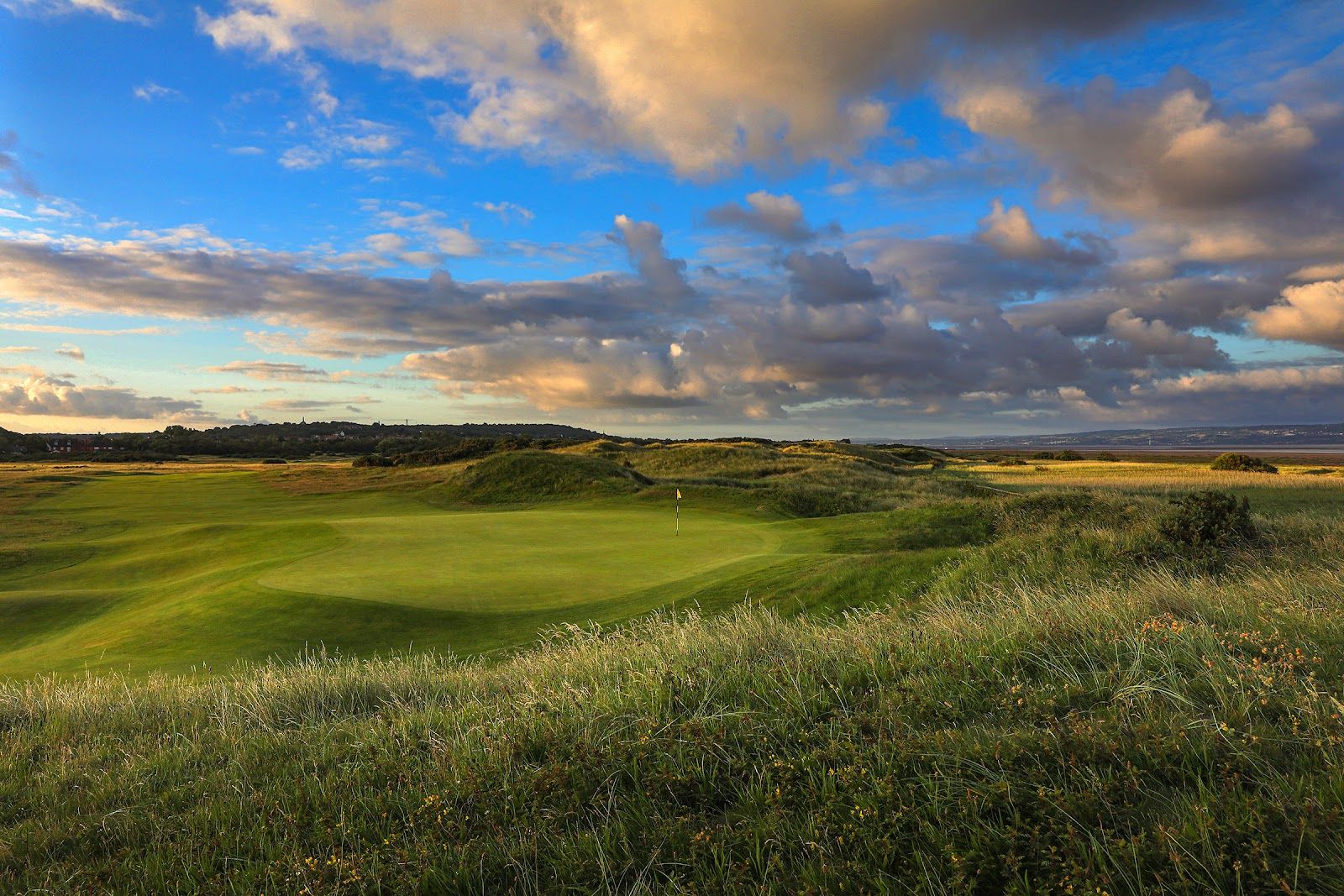
- AddressMeols Dr, Hoylake, Wirral CH47 4AL, UK
- Championships hosted
Royal Liverpool was the second English course to host the Open Championship and is the fifth most used Open venue after St Andrews, Prestwick, Muirfield and Royal St George’s.
| Date | Winner | Country |
| 1897 | Harold Hilton | England |
| 1902 | Sandy Herd | Scotland |
| 1907 | Arnaud Massy | France |
| 1913 | John H.Taylor | England |
| 1924 | Walter Hagen | USA |
| 1930 | Bobby Jones | USA |
| 1936 | Alf Padgham | England |
| 1947 | Fred Daly | N Ireland |
| 1956 | Peter Thomson | Australia |
| 1967 | R. De Vicenzo | Argentina |
| 2006 | Tiger Woods | USA |
| 2014 | Rory McIlroy | N Ireland |
The Open Championship returned to Royal Liverpool Golf Club in 2006 after a 39-year gap. Hoylake, as it is called by those in the know, has a long and illustrious history of playing host to the Open, and has now staged twelve, its first in 1897. Founded in 1869, Hoylake is the second oldest seaside links course in England – only Royal North Devon is the more senior.
George Morris, brother of Old Tom, and Robert Chambers originally laid out a 9-hole course on the site of a racecourse and for the first seven years, golfers shared the land with members of the Liverpool Hunt Club. Three extra holes were soon added and in 1871, the course was extended to 18 holes. In 1872, the club received royal patronage from Prince Arthur, Duke of Connaught.
Bernard Darwin reported on the coming of the Haskell, which burst onto the scene at the Amateur Championship at Hoylake in 1902. The winner Charles Hutchings and the runner-up, Sidney Fry, used the rubber-core ball. Later that same year, Sandy Herd used a Haskell and won the Open at Royal Liverpool, sounding the death knell for the “gutty” ball.
Harry Colt made alterations to the 11th and 17th holes, named Alps and Royal. He also created a new 13th hole and changed the greens at the 8th and 12th holes.
In his book, Golf Between Two Wars, Bernard Darwin describes Colt’s changes and the alteration to the 16th, called the Dun: “I do not criticise the disappearance of the old cross-bunker at the Dun because that had been made inevitable by the modern ball and modern driving. It was sad to see it go if only because the soberest might fall into it after dinner – I have seen them do it – in finding their way home across the darkling links; but it had to go and the present Dun is a fine long hole. Trying not to be Blimpish and die-hard and to look at the course with eyes unblurred by sentiment, I solemnly and sincerely declare that Mr Colt made a great job of it”.
Donald Steel was commissioned to make alterations to the course; these changes included a number of new greens, tees and bunkers. The work was completed in 2001 stretching the course out in excess of 7,000 yards. We wonder if Darwin would approve of Steel’s alterations?
The land is unusually flat, offering little in the way of definition – three sides of the course are bordered by houses and the Dee Estuary lies on the western side. When you get out onto the course, the undulations become more pronounced and, as you move away from the houses, the overall experience improves. The holes alongside the shore (9th, 10th, 11th and 12th) are the most visually appealing and very challenging.
Without doubt, Royal Liverpool is a tough links. Only six holes are in the dunes – otherwise there is little protection from the ever-changing wind. There is nothing artificial about the course. It represents a traditional, genuine test of golf and it was heart-warming to see that Hoylake examined the very best players in 2006. They came, they saw and Tiger conquered.
During the winter of 2009/10, Martin Hawtree carried out alterations which included a new 17th green, removal of fourteen bunkers, seven new swales added to green surrounds, and broken ground was added to the rough on six holes to toughen the challenge. The course measured 90 yards longer (7,312 yards) for the 2014 Open Championship when Rory McIlroy claimed his first Open and third major title with a two-shot victory over Sergio Garcia and Rickie Fowler.
At the start of 2020, having consulted with both the R&A and architect Martin Ebert, the club announced a series of course alterations to be made in advance of The Open returning to Hoylake in 2022.
These modifications included raising the front of the 4th green to allow more pin positions, moving the 7th green to the left of its current position and introducing new tees on the 8th, remodelling the 13th green with new runoff areas, creating a short par three 17th hole (with the new green positioned where the 15th tees were located), and lengthening the par five 18th.
Course Reviews
Leave a Review
This course has not been reviewed.
If you have played this course, consider .
Thanks for the review
Your review has been successfully submitted and will be reviewed for approval.
Course Reviewed
You’ve already submitted a review for this course.



